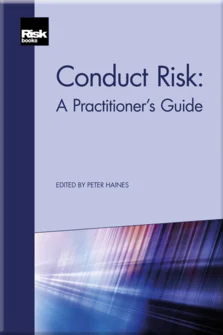Closing Comments on the Future of Conduct Risk
Wei Yang, Bertrand Hassani, Clare Payne, Annie Searle, Kimon de Ridder, Peter Mitic and Elizabeth Sheedy
Introduction
An Overview of Conduct Risk
How Does Conduct Risk Manifest and What Are Its Root Causes?
What Are the Driving Forces of and Who Owns Conduct Risk?
Scope and Ownership within the Business
Conduct Risk in Financial Services: Lessons from the Hospitality and Leisure Industry
Ethical Culture: What, Why and How?
Language and Conduct Risk: Limited Language – Big Blind Spots
An Anthropological Perspective on Conduct Risk
Identifying and Measuring Conduct Risk
Risk Appetite Setting and Modelling Conduct Risk
The Effect of Conduct Risk Losses on Reputation
Bringing the Customer Back to the Foreground: The End of Conduct Risk?
Managing Conduct Risk
Closing Comments on the Future of Conduct Risk
INTRODUCTION – WEI YANG
As this book has demonstrated, conduct risk is complex and provokes many questions. What indeed is conduct risk? What are its key drivers? What are its consequences? How can we quantify it, if this is even possible? How can we manage it? This chapter gathers the thoughts and opinions of authors with different backgrounds and experiences. In searching for answers to these questions, the following key words appear very frequently: the “business model” of any firm plays an important role; the clear identification of “ownership” in conduct risk is essential to its management; a “good” culture encourages ethical behaviours; and giving more priority to the interest of “customers”, instead of short-term profitability, is fundamental to the reduction of conduct risk.
The future of conduct risk is intrinsically related to the transformation of the industry. For instance, the next few years will see new directives and laws enforced, new tools, models and practices implemented and new products sold. Indeed, we have seen the emergence of a new ecosystem (financial technology (fintech), etc) which is shaking up the sector as we know it. Our contributors touch on
Copyright Infopro Digital Limited. All rights reserved.
As outlined in our terms and conditions, https://www.infopro-digital.com/terms-and-conditions/subscriptions/ (point 2.4), printing is limited to a single copy.
If you would like to purchase additional rights please email info@risk.net
Copyright Infopro Digital Limited. All rights reserved.
You may share this content using our article tools. As outlined in our terms and conditions, https://www.infopro-digital.com/terms-and-conditions/subscriptions/ (clause 2.4), an Authorised User may only make one copy of the materials for their own personal use. You must also comply with the restrictions in clause 2.5.
If you would like to purchase additional rights please email info@risk.net











